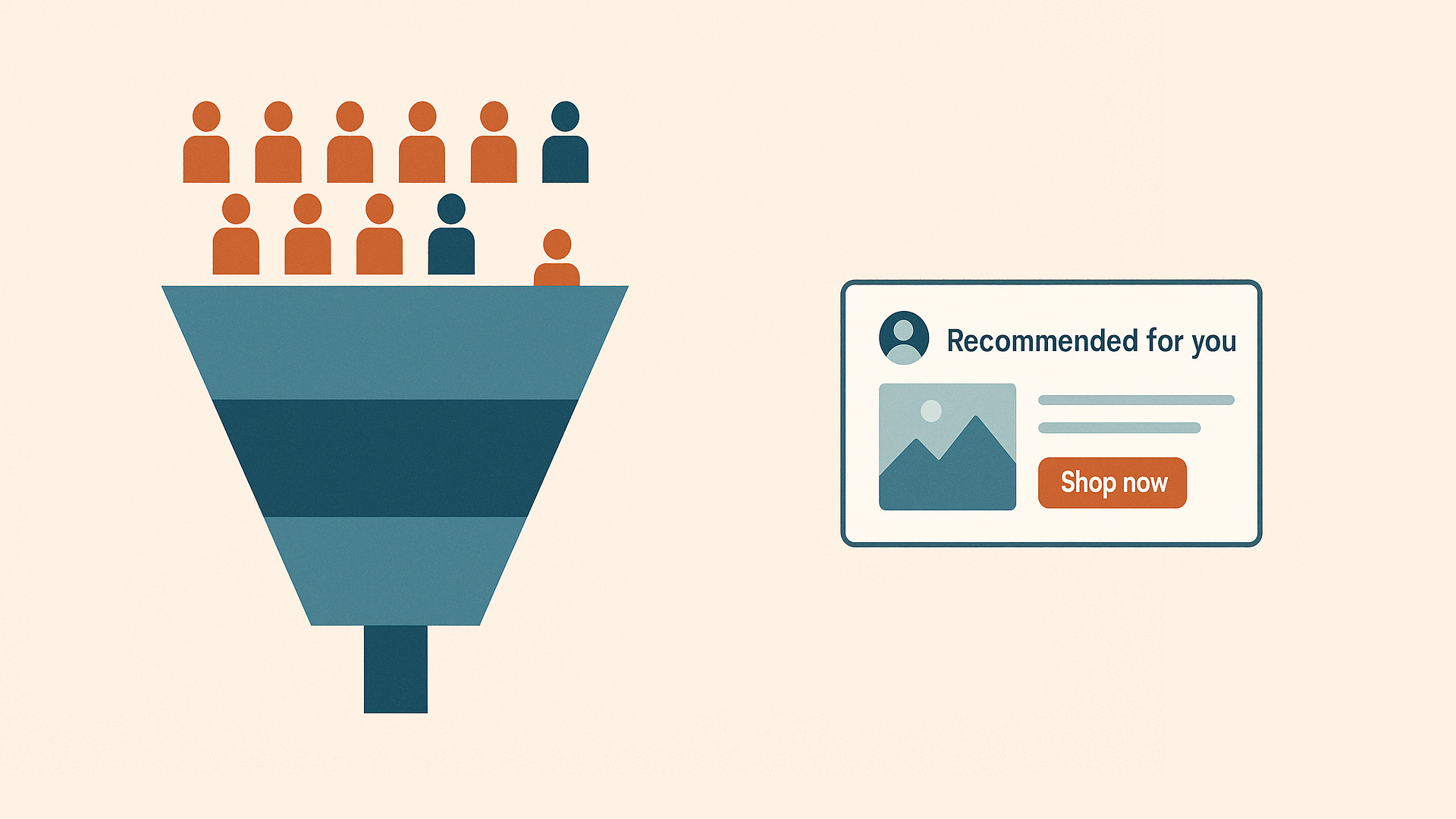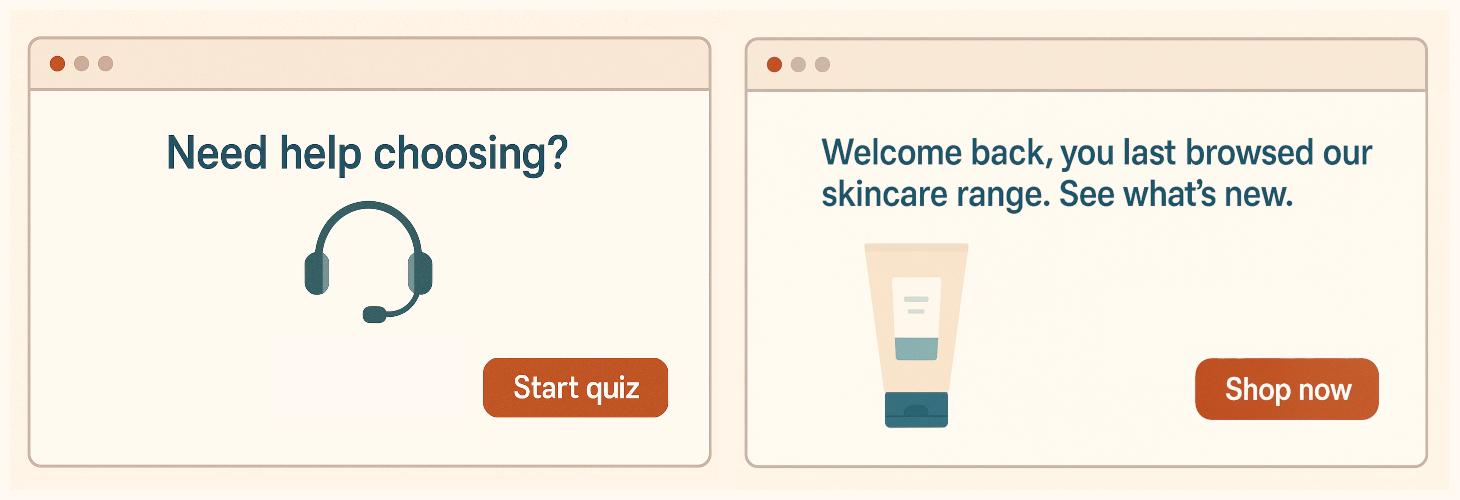What to do with visitors who don’t convert? A personalisation strategy for the 98%

Most ecommerce teams focus their energy on the 2% of visitors who convert. But what about the other 98%?
They’re not just background noise. Many of them came with real interest. They browsed products, clicked ads, even returned multiple times. But they left without buying. And once they’re gone, most teams rely on retargeting or email flows to get them back.
That approach misses a huge opportunity. Instead of only reacting after someone leaves, what if your website could adapt in real time while the visitor is still there?
Rethinking non-converters
Let’s stop thinking of non-conversion as a binary. Most visitors who don’t buy fall into familiar patterns. They weren’t all just “not ready.” Some were interested but didn’t find the right message. Others weren’t sure what to choose. A few got distracted. And some were clearly on the fence.
When we start to recognise these behaviours, we can design personalised experiences that speak directly to them. That’s where on-site personalisation becomes powerful.
Here are a few examples of what’s possible.
1. The hesitant browser
This visitor opens multiple product detail pages, stays on the site for a while, but never adds to cart. They might be unsure which option is best. A personalised experience here could highlight a comparison table, surface recently viewed items in a persistent banner, or trigger a “Need help choosing?” message with a link to a guide or quiz.
2. The misaligned message
Often driven by campaigns, this visitor clicks through from an ad or email, but lands on a page that doesn’t quite match what they expected. The product might be relevant, but the copy or offer feels off. This is where simple personalisation like adapting the hero message or promotional banner based on campaign UTM parameters can make a big difference.
3. The returning researcher
They’ve been here before. Maybe they looked at the same product three times, or keep coming back to the same category. They know what they want, but they’re waiting for the right nudge. For this group, highlighting stock levels, showing how many people have purchased recently, or adapting sort order to bring the viewed item to the top can create just enough urgency or clarity to push them forward.
4. The silent signaler
Sometimes visitors do take action, just not the one you’re tracking. They sign up for your newsletter, click on size guides, or spend time on your reviews. These are signals of intent. You can respond by adjusting the experience when they return. For example, remove distractions, highlight a new-in item related to what they browsed, or show a loyalty signup prompt if they’re already a subscriber.

What makes this work?
All of these tactics rely on a simple idea: your website should react while the visitor is still active. Not every experience has to be deeply personalised. But showing that the site sees and responds to behaviour can create a sense of momentum.
You don’t need a full CDP or logged-in state to do this. With tools like GA4, Shopify events, or basic behaviour tracking, you can personalise based on things you already know: traffic source, number of visits, scroll depth, pageviews, or items clicked.
It’s not just about lifting conversion
The real benefit of personalisation for the 98% isn’t just squeezing out more short-term sales. It’s about making every visit count, even if that visit doesn’t end in a transaction. Because the more helpful your site feels in the moment, the more likely that visitor is to come back, engage, or convert later. Especially for expensive high-consideration items.
Where to start
You don’t need to personalise everything at once. Start with one page that gets lots of traffic but has a high bounce or exit rate. Ask yourself: what kind of visitor ends up here, and what are they trying to do?
Then run a simple rule-based personalisation. Change the message, highlight something different, or adapt the structure based on known behaviour.
You’ll be surprised how quickly you can create relevant, experiences without a big build or new data pipeline.
Want to see how fast you can start reacting to your 98%? Let’s chat about what’s already possible with the data and stack you have.
Like this post?
We write about personalisation, composable architectures, and how to put your data to work in our newsletter.
